Exploring Italy's Greek Temples
The Ancient Civilization's Echoes in Italy's Greek Temples.
Known for its Roman history, Italy is home to some of the most impressive Greek temples outside of Greece.
They provide a unique window into the ancient Greek world that once flourished on Italian soil and are primarily found in southern regions such as Campania, Basilicata, and Sicily.
The region of the "bel paese" known as "Magna Graecia," or Greater Greece, was a thriving hub of Hellenic trade, culture, and religious activities between the eighth and third centuries BCE.
These temples now serve as silent reminders of a past period, attracting tourists, architects, and historians alike.
Paestum: An Exhibition of Doric Proficiency
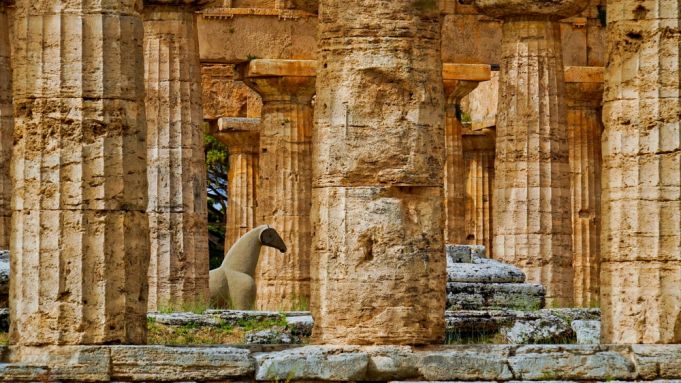
Paestum, which lies in Campania, just south of Naples, is home to some of the world's best-preserved Greek temples. Around 600 BCE, Greek settlers established the site as Poseidonia, and its architectural gems are a singular example of ancient craftsmanship.
The Temple of Hera (Basilica): Dedicated to the goddess Hera, this building dates back to the sixth century BCE and has a strong, austere charm. Early Greek architecture was characterised by power and simplicity, which are evoked by its robust Doric columns.
The Temple of Athena: Constructed in 500 BCE, this temple is notable for combining Ionic and Doric architectural elements, which is indicative of the architectural innovation of the time.
The Second Temple of Hera: Often referred to as the Temple of Neptune, this masterwork from the fifth century BCE is regarded as the height of Doric architecture. Its columns give off an air of timeless harmony since they are perfectly symmetrical.
Via Magna Graecia, 84047 Capaccio-Paestum, Italy is the address.Daily hours of operation: 8:30 AM to 7:30 PM (last admission at 6:30 PM).Adult tickets cost €12, with elder and student discounts available.
The serene beauty of Paestum frequently astounds visitors, as the ancient temples stand magnificently against the beautiful skies and rolling hills.
Sicily: Italy's Greek Heartland
The largest island in the Mediterranean, Sicily, served as a primary gathering place for Greek immigrants. The island's temples, which combine local workmanship with grandeur, are on par with those of mainland Greece.
Agrigento's Valley of the Temples
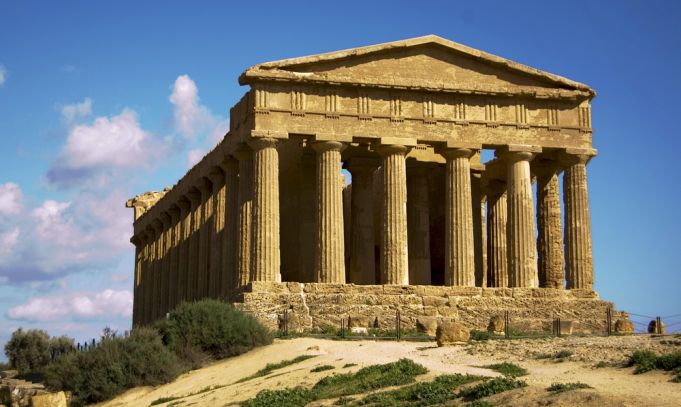
Some of the best specimens of ancient Greek architecture can be found at the Valley of the Temples, a vast archaeological park and UNESCO World Heritage site:
The Temple of Concordia is one of the best-preserved Doric temples still standing, having been constructed in 440 BCE. Because it was converted into a Christian church in the sixth century CE, it is in immaculate shape.
The Temple of Juno: Dedicated to the goddess of marriage, this temple is perched on a ridge with a view of the valley. The site's mystical aura is enhanced by its spectacular surroundings.
The Temple of Heracles: Despite being largely destroyed, the columns that remain serve as a reminder of the durability of old craftsmanship.
Address: 92100 Agrigento, Sicily, Italy; Via Panoramica Valle dei Templi.Hours of Operation: 8:30 AM to 8:00 PM every day.Adult tickets cost €10; children under 18 and EU nationals under 26 enter free of charge.
A Forgotten Marvel: Selinunte
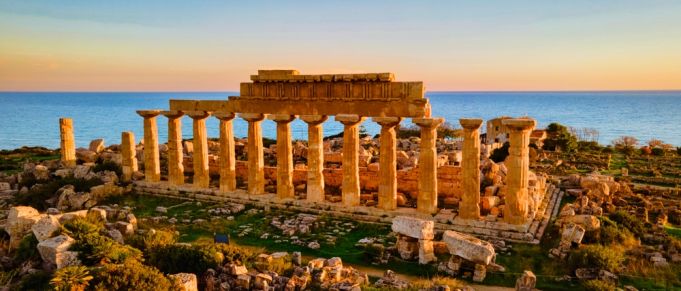
Selinunte, a sizable archaeological site peppered with temple ruins, is located on Sicily's southwest coast. With its dispersed yet towering columns, the enormous Temple of Hera stands out among them and provides insight into the scope and aspirations of Greek builders.
Strada Provinciale 81, Castelvetrano, 91022 Sicily, Italy is the address.Hours of Operation: 9:00 AM to 6:00 PM every day.Adult admission is €6; group and student discounts are available.
Metapontum: The Undiscovered Gem
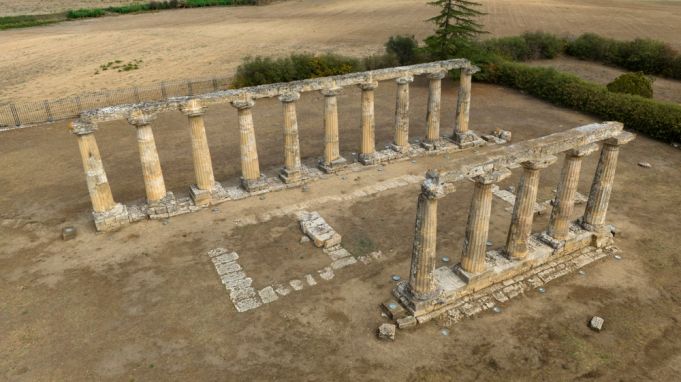
Basilicata's Metapontum is just as fascinating as Paestum or Agrigento, although being less well-known. The 15 surviving columns of the Temple of Hera, also called the Tavole Palatine, proudly contrast with the Italian countryside. For those looking to connect with the ancient past, this location offers a more personal encounter despite being quieter and less visited.
SS106 Jonica, 75012 Metaponto, Basilicata, Italy is the address.Hours of Operation: 9:00 AM to 7:00 PM every day.Adult tickets cost €4, while children under 18 enter free of charge.
Taormina's Greek Theatre
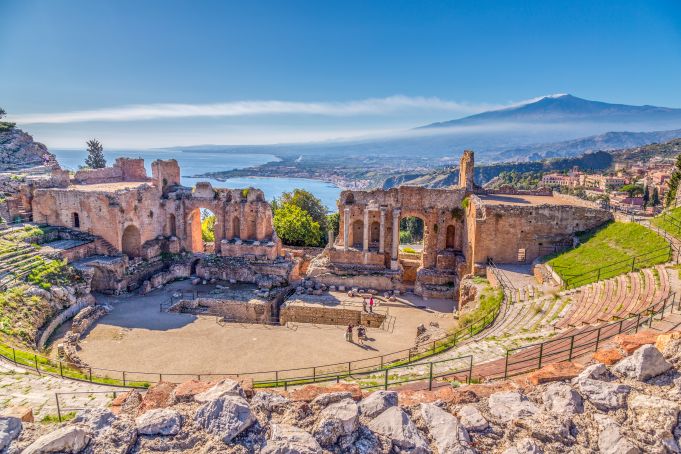
One of the most well-known and stunning historic theatres in the world is the Greek Theatre of Taormina, which is perched on a mountaintop with a view of the Ionian Sea. This theatre was constructed in the third century BCE with Greek plays and religious rituals in mind. It was modified for gladiatorial contests and other public performances throughout the Roman era.
Greek architecture is typified by the theater's semi-circular shape, which is cut into the landscape to enhance acoustics and offer breathtaking views. Visitors can take in the expansive views of the sea, the town of Taormina, and the distant, imposing silhouette of Mount Etna from the seats.
The theatre continues its tradition as a centre for the arts by hosting performances, concerts, and cultural events today.
Via Teatro Greco, 98039 Taormina, Sicily, Italy is the address.Operation hours are 9:00 AM to 7:00 PM, every day.Tickets: The general admission fee is €10, with senior and student discounts available.
It is a must-visit location for anyone travelling through Sicily because of its historical significance as well as the unmatched beauty of the surroundings.
The Teachings of These Temples
Italy's Greek temples are more than just historical artefacts. They demonstrate how Greek culture had a profound impact on ancient Italy's political, religious, and artistic traditions. These buildings are prime examples of the Greeks' command of material, symmetry, and proportion; they frequently used marble and limestone from the area to realise their ideas.
However, these temples also convey a tale of cross-cultural interaction. Greek colonists and Italic tribes mixed in Magna Graecia, resulting in a distinctive fusion of customs that had a long-lasting impact on the area. Originally places of worship and social meetings, the temples now act as links to a common human past.
Today's Temple Visits
Walking among these historic ruins is a life-changing experience for contemporary tourists. These locations encourage contemplation of the ancients' inventiveness and spirituality, whether it is the golden light that bathes the columns of Agrigento at sunset or the serene grandeur of Paestum in the early morning.
These ancient monuments are given new life by the cultural events that are held at several of these locations, including light shows, plays, and festivals. These programs serve to both conserve the temples and act as a reminder of their continued significance in the contemporary world.
A Trip Through Time
More than just tourist attractions, the Greek temples in Italy offer glimpses into a culture that cherished order, beauty, and the holy. They serve as a reminder of the universal human yearning to relate to something bigger than ourselves. Discovering these ageless monuments is a voyage through the core of historical legacy, regardless of your level of interest in history.

















